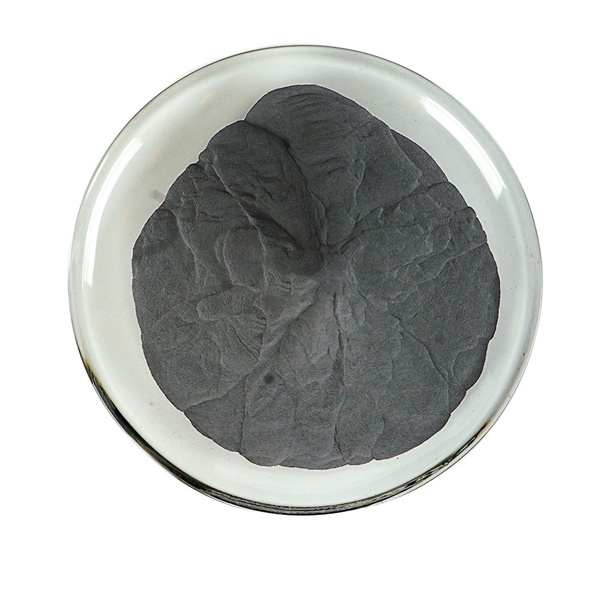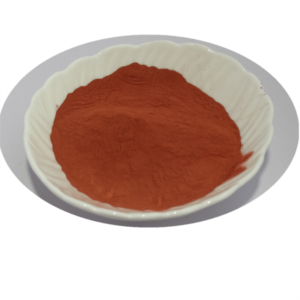개요
적층 제조(AM)라고도 하는 3D 프린팅은 금속 분말을 사용하여 디지털 모델에서 직접 복잡한 구성 요소를 레이어별로 제작합니다. 분말은 CAD 모델 형상에 따라 안내되는 정밀 열원에 의해 선택적으로 녹거나 결합됩니다.
금속에 널리 사용되는 적층 제조 공정에는 바인더 분사, 지향성 에너지 증착, 분말 베드 융착, 시트 적층 등이 있습니다. 각 공정에는 최적의 밀도, 표면 마감, 치수 정확도 및 기계적 특성을 달성하기 위해 특정 특성을 가진 분말 공급 원료가 필요합니다.
이 가이드에서는 합금 유형, 파우더 생산 방법, 주요 파우더 특성, 애플리케이션, 사양, 공급업체, 재료 소싱 시 구매 고려 사항 등 3D 프린팅용 금속 파우더에 대해 자세히 살펴봅니다. 유용한 비교 표에는 파우더 선택 및 검증에 도움이 되는 기술 데이터가 요약되어 있습니다.
제조업체는 최적화된 3D 프린팅 파우더에 대한 지식이 풍부한 공급업체와 연결하여 프린트 품질을 개선하고 결함을 줄이며 설계의 자유, 빠른 반복, 부품 통합과 같은 AM의 이점을 충분히 활용할 수 있습니다.

3D 프린팅 분말용 합금
다양한 금속과 합금이 적층 제조 공정에 적합한 파우더 형태로 제공됩니다:
일반적인 합금 시스템 3D 프린팅 금속 분말
- 스테인리스 스틸
- 공구강
- 티타늄 및 티타늄 합금
- 알루미늄 합금
- 니켈 초합금
- 코발트-크롬 합금
- 구리 합금
- 귀금속
내식성, 강도, 경도, 전도성 또는 기타 특성 측면에서 특정 애플리케이션 요구 사항을 충족하도록 표준 합금과 맞춤형 합금을 모두 공급할 수 있습니다.
적층 제조용 금속 분말 생산 방법
적층 제조를 통해 생산된 금속 분말을 활용합니다:
3D 프린팅을 위한 일반적인 금속 분말 제조 방법
- 가스 분무
- 물 분무
- 플라즈마 분무
- 전기 분해
- 카보닐 철 공정
- 기계적 합금
- 금속 하이드레이딩/탈수화
- 혈장 구상화
- 과립화
구형 분무 분말은 대부분의 적층 제조 공정에 필요한 최적의 흐름과 고밀도 패킹을 제공합니다. 일부 기술에서는 나노 크기 또는 맞춤형 합금 입자를 사용할 수 있습니다.
금속 인쇄 분말의 주요 특성
AM의 중요한 파우더 특성에는 다음이 포함됩니다:
금속 3D 프린팅 파우더 속성
| 특성 | 일반적인 값 | 중요성 |
|---|---|---|
| 입자 크기 분포 | 10~45미크론 | 치밀화, 표면 마감에 영향 |
| 파티클 모양 | 구형 | 흐름 및 포장 개선 |
| 겉보기 밀도 | 2~4g/cc | 베드 밀도에 영향을 미칩니다. |
| 탭 밀도 | 3~6g/cc | 압축성을 나타냅니다. |
| 홀 유량 | 25-50초/50g | 부드러운 파우더 발림성 보장 |
| 점화 시 손실 | 0.1-0.5% | 낮은 습도로 인쇄 품질 향상 |
| 산소 함량 | <0.1% | 미세 구조적 결함 최소화 |
입자 크기, 모양, 화학적 특성과 같은 특성을 정밀하게 제어하는 것은 원하는 기계적 특성을 가진 완전 고밀도 적층 제조 부품을 제작하는 데 매우 중요합니다.
응용 3D 프린팅 금속 분말
AM은 기존 기술로는 불가능한 복잡한 형상을 구현할 수 있습니다:
금속 3D 프린팅 응용 분야
| 산업 | 용도 | 혜택 |
|---|---|---|
| 항공우주 | 터빈 블레이드, 구조물 | 설계의 자유, 무게 감소 |
| 의료 | 임플란트, 보철물, 기구 | 맞춤형 모양 |
| 자동차 | 경량화 프로토타입 및 도구 | 빠른 반복 |
| 방어 | 드론 부품, 보호 구조물 | 빠른 프로토타입 및 단기 실행 |
| 에너지 | 열교환기, 매니폴드 | 부품 통합 및 토폴로지 최적화 |
| 전자 제품 | 차폐, 냉각 장치, EMI | 복잡한 밀폐 구조 |
경량화, 부품 통합, 극한 환경을 위한 고성능 합금은 기존 제조 방식에 비해 주요 이점을 제공합니다.
3D 프린팅 금속 분말 사양
국제 사양은 AM 파우더 특성을 표준화하는 데 도움이 됩니다:
적층 제조를 위한 금속 분말 표준
| 표준 | 범위 | 매개변수 | 테스트 방법 |
|---|---|---|---|
| ASTM F3049 | 적층 금속 특성 분석 가이드 | 샘플링, 크기 분석, 화학, 결함 | 현미경, 회절, SEM-EDS |
| ASTM F3001-14 | 적층 제조용 티타늄 합금 | 입자 크기, 화학, 흐름 | 체질, SEM-EDS |
| ASTM F3301 | 적층 제조용 니켈 합금 | 입자 모양 및 크기 분석 | 현미경, 이미지 분석 |
| ASTM F3056 | AM용 스테인리스 스틸 | 화학, 분말 속성 | ICP-OES, 피크노메트리 |
| ISO/ASTM 52921 | 적층 제조 분말에 대한 표준 용어 | 정의 및 파우더 특성 | 다양한 |
공개된 사양을 준수하면 중요한 애플리케이션을 위한 반복 가능한 고품질 분말 공급 원료가 보장됩니다.
글로벌 공급업체 3D 프린팅 금속 분말
적층 제조에 최적화된 금속 분말을 공급하는 주요 글로벌 공급업체는 다음과 같습니다:
3D 프린팅용 금속 분말 제조업체
| 공급업체 | 재료 | 일반적인 입자 크기 |
|---|---|---|
| 샌드빅 | 스테인리스, 공구강, 니켈 합금 | 15-45 미크론 |
| 프렉스에어 | 티타늄, 초합금 | 10-45 미크론 |
| AP&C | 티타늄, 니켈, 코발트 합금 | 5-25 미크론 |
| 목수 첨가제 | 코발트 크롬, 스테인리스, 구리 | 15-45 미크론 |
| LPW 기술 | 알루미늄 합금, 티타늄 | 10-100 미크론 |
| EOS | 공구강, 코발트 크롬, 스테인리스강 | 20-50 미크론 |
많은 사람들이 바인더 분사, 파우더 베드 융합, 지향성 에너지 증착과 같은 일반적인 적층 제조 방법을 위해 특별히 설계된 미세 구형 분말에 집중하고 있습니다.
3D 프린팅 금속 분말 구매 시 고려 사항
금속 분말 공급업체와 논의해야 할 주요 사항
- 원하는 합금 구성 및 특성
- 목표 입자 크기 분포 및 모양
- 봉투 밀도 및 홀 유동성
- 산소 및 수분과 같은 불순물 허용 수준
- 필수 테스트 데이터 및 분말 특성화
- 사용 가능한 수량 범위 및 리드 타임
- 인화성 물질에 대한 특별 취급 주의 사항
- 품질 시스템 및 분말 원산지 추적성
- 적층 제조에 필요한 파우더 요구 사항에 대한 기술 전문성
- 물류 및 배송 메커니즘
최적화된 적층 제조 파우더에 경험이 풍부한 공급업체와 긴밀히 협력하여 공정 및 부품에 이상적인 파우더를 선택할 수 있습니다.
금속 3D 프린팅 파우더의 장단점
적층 제조용 금속 분말의 장점과 한계
| 장점 | 단점 |
|---|---|
| 복잡한 맞춤형 지오메트리 허용 | 기존 소재보다 높은 비용 |
| 개발 시간 대폭 단축 | 분말 취급 시 주의사항 |
| 어셈블리 및 경량화 간소화 | 인쇄된 부품에 후처리가 필요한 경우가 많습니다. |
| 단조 소재에 가까운 물성 구현 | 크기 및 빌드 볼륨 제약 조건 |
| 고가의 금형, 금형, 툴링 제거 | 열 스트레스로 인해 균열 및 왜곡이 발생할 수 있습니다. |
| 부품 통합 및 토폴로지 최적화 지원 | 기존 방식보다 적은 생산량 |
| 구매 대 비행 비율 크게 향상 | 엄격한 분말 특성화 및 파라미터 개발 필요 |
금속 AM을 적절히 사용하면 판도를 바꾸는 이점을 제공하지만 성공적으로 구현하려면 전문 지식이 필요합니다.

자주 묻는 질문
금속 분말 입자 크기를 얼마나 작게 만들 수 있나요?
특수 분무 기술을 사용하면 1~10미크론까지 분말을 생산할 수 있지만, 대부분의 금속 프린터는 흐름과 패킹을 위해 15~20미크론 정도의 최소 크기가 가장 효과적입니다.
인쇄된 금속 부품의 표면 마감이 불량한 원인은 무엇인가요?
표면 거칠기는 부분적으로 용융된 파우더가 표면에 부착된 경우, 스패터, 계단식 계단, 최적의 용융 풀 특성이 아닌 경우 등에서 발생합니다. 더 미세한 파우더를 사용하고 이상적인 처리 파라미터를 설정하면 마감 처리가 부드러워집니다.
모든 금속 3D 프린팅 방식이 동일한 파우더를 사용하나요?
겹치는 부분이 있긴 하지만 바인더 제팅은 일반적으로 파우더 베드 융합보다 더 넓은 파우더 크기 분포를 사용합니다. 일부 공정은 융점이나 반응성에 따라 특정 합금으로 제한됩니다.
혼합 또는 바이메탈 파우더는 어떻게 만들어지나요?
사전 합금된 분말은 균일한 특성을 보장하지만 복합재의 경우 물리적 분말 혼합 또는 특수 분무 기술을 통해 혼합 원소 분말 혼합을 제공합니다.
금속 프린터에서 파우더 재료를 교체하는 데 시간이 얼마나 걸리나요?
상당히 다른 합금 간의 전체 퍼지 및 전환에는 일반적으로 6~12시간이 소요됩니다. 유사한 소재 간의 빠른 변경은 1시간 이내에 완료할 수 있습니다.
결론
최적화된 금속 분말을 사용하면 적층 제조 공정에서 우수한 특성을 지닌 복잡하고 견고한 금속 부품을 제작할 수 있습니다. 고품질의 결과를 얻으려면 합금 화학 및 파우더 특성을 프린팅 방법과 부품 성능 요구 사항에 맞추는 것이 중요합니다. 숙련된 파우더 공급업체와의 파트너십을 통해 최종 사용자는 파우더 생산과 3D 프린팅 공정 모두에 대한 전문 지식을 활용하여 견고한 AM 부품을 보다 빠르고 안정적으로 개발할 수 있습니다.







